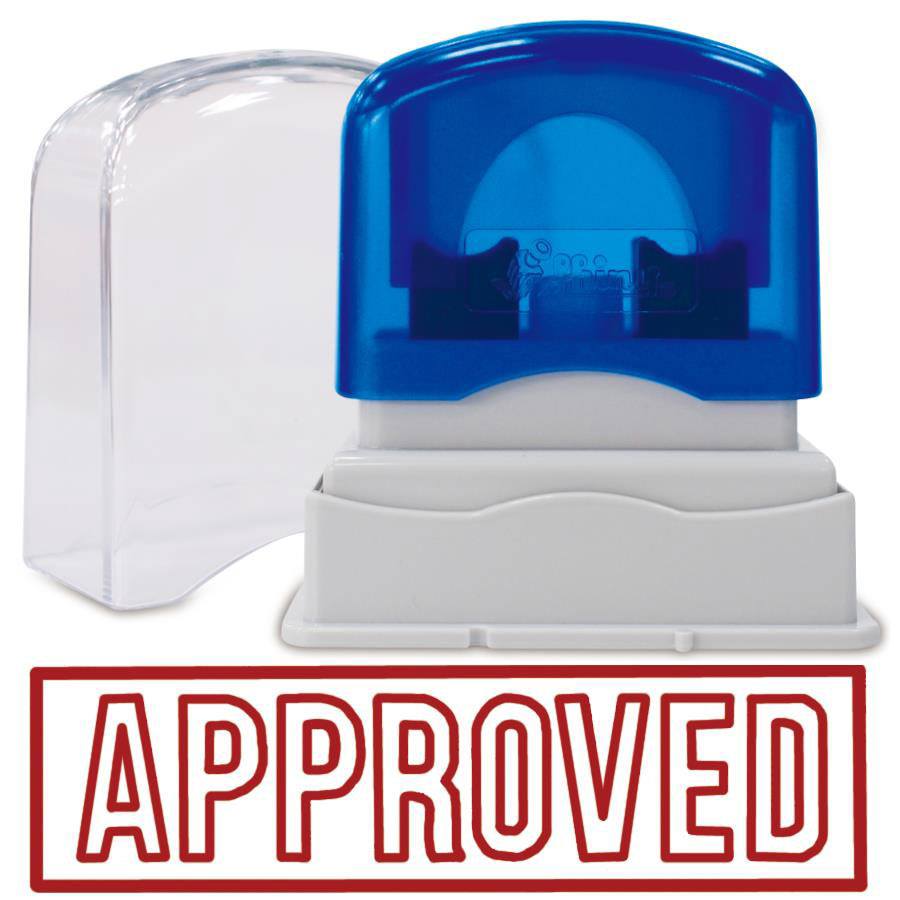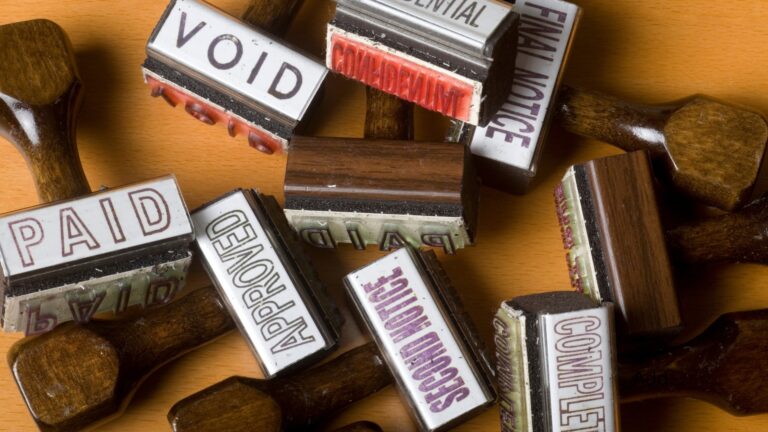What Are Ink Stamps?
Ink stamps are a staple in homes, offices, and schools. Ink stamps may seem simple, but these handy tools leave a lasting impression (terrible pun intended) on any surface to convey information or branding.
While we may be familiar with the basic rubber stamp, there are actually several types of ink stamps. Knowing how ink stamps work and the different types of stamps available can help you find the right one for your needs, whether you’re marking documents, branding packaging, or crafting school projects.
How Ink Stamps Work
Stamps work by transferring ink from a surface onto another surface, typically paper, to create a visible mark. Simply put, the stamp is pressed onto an ink pad to load the raised design with ink. When the stamp is then pressed onto a surface, the ink transfers, leaving a clear impression.
This process can be used in marking documents, personalising items, and creating DIY crafts, among other things.
The Components of an Ink Stamp
An ink stamp generally consists of three main parts: the handle, the die (the stamping surface), and the mount.
- The handle provides a grip for the user to press down evenly.
- The die is the core component of the stamp; it is the rubber or polymer surface that contains the design, text, or image to be stamped.
- The mount holds the die in place, ensuring it aligns correctly with the ink pad and the surface being stamped.
For pre-inked and self-inking stamps, additional parts include an internal ink reservoir and a mechanism to allow for the automatic re-inking of the die. This makes self-inking and pre-inked stamp ideal for quick, repeated use, without the need for a separate ink pad.
Basic Uses of Ink Stamps
Ink stamps can be used in various settings.
In offices, stamps help streamline tasks such as marking dates on documents, approving forms, and stamping signatures, saving time and ensuring consistency in document handling.
In schools, teachers use ink stamps to provide feedback, mark assignments, and engage students with custom messages like “Great Job” or “Excellent.”

Types of Stamp
Ink stamps come in different forms, each suited for specific tasks. The main types include rubber stamps, pre-inked stamps, self-inking stamps, and specialty stamps.
Rubber Stamps
Rubber stamps are the classic, manual type that requires a separate ink pad. Their durable rubber surface produces sharp, precise impressions on paper or cardstock. Rubber stamps are also highly customisable and can accommodate a wide range of designs, ranging from one-liners to intricate designs.
Pre-Inked Stamps
Pre-inked stamps have the ink infused directly onto the die, eliminating the need for a separate ink pad. These stamps use oil-based ink, which allows for sharper, high-quality impressions for longer – some stamps can create up to 50,000 impressions before having to refill. As such, they can be great for creating detailed images, such as logos, artwork, or designs with intricate details.
Self-Inking Stamps
Self-inking stamps have a built-in ink pad that automatically re-inks the die after each use. This makes them ideal for high-volume tasks, such as stamping dates, approving documents, or marking labels.
Specialty Stamps
Specialty stamps are tailored for specific tasks, such as:
- Embossing Stamps (Dry Seal) – Embossing stamps do not use ink. Instead, they press a raised imprint onto paper, adding a professional touch to documents like certificates or official letters. The raised, tactile effect gives a distinguished look to the paper.
- Foil Stamps – Often used for decorative purposes, foil stamps apply metallic foil to surfaces, adding an elegant and eye-catching design element.
- Date Stamps – These stamps feature an adjustable date, making them useful for filing or logging information.
- Numbering Stamps – Often used in inventory management, these stamps help track items with sequential numbers.
- Custom Stamps – Custom stamps can be used for many different purposes in which a customised information set is needed, such as branding, return addresses, company mottos and more. The only real limitation of a custom stamp is the size of the die.
Stamp Care and Maintenance
Regular maintenance can keep your stamps in good condition. To ensure that your ink stamps produce clear impressions every time, here are some tips and pointers.
How to Clean Ink Stamps
Cleaning ink stamps regularly prevents ink build up, which can cause smudges and reduce the quality of the imprint. Use a damp cloth or a specialised stamp cleaner to wipe the die gently. Avoid harsh chemicals, especially for rubber stamps, as they can degrade the material over time. After cleaning, let the stamp air dry before storing it.
Tips for Refilling or Re-inking Stamps
No matter how many imprints they can make, re-inked and self-inking stamps will inevitably run out of ink. For pre-inked stamps, use only the manufacturer’s recommended ink. Add a few drops directly to the die and let it absorb the ink. For self-inking stamps, open the casing to access the ink pad, then add ink sparingly. Overfilling can lead to blotchy impressions.
Storage and Handling
Store ink stamps in a cool, dry place away from direct sunlight. Prolonged exposure to heat or sunlight can dry out the ink and even damage the rubber surface. Keep your stamps in a box or drawer to prevent dust from settling on the die. It’s also best practice to store them face-up to avoid pressure on the stamping surface. Excess pressure on the die can distort the design.
Creative Uses for Ink Stamps
Beyond their traditional uses, ink stamps are a fantastic tool for creativity and branding.
Branding for Businesses
Using custom ink stamps are an affordable way for small businesses to leave a lasting impression and cement a brand identity. Customised stamps can be used to imprint logos on packaging, business cards, flyers, and promotional materials. They can also be used to add a personal touch to labels and boxes, which can differentiate products in the market, particularly in artisanal or craft-focused industries.
Craft Projects and DIY Stationery
Crafters often use ink stamps to add unique designs to scrapbooks, greeting cards, and other DIY projects. By using different ink colours and stamp designs, you can create custom stationery, gift wrap, or even fabric prints.
Frequently Asked Questions About Ink Stamps
Can I use any ink with my stamp?
It’s best practice to use ink recommended by the manufacturer. Using the wrong type of ink, especially for pre-inked or self-inking stamps, can damage the die or clog the stamping mechanism.
How long do ink stamps last?
The lifespan of an ink stamp depends on its usage and care. Rubber stamps can last many years if cleaned and stored properly. Pre-inked and self-inking stamps may need refills after a few thousand impressions, but the stamp can last several years with proper maintenance.
Can stamps be customised for business logos or unique designs?
Yes, many companies offer custom stamp services. You can provide your logo or specific design

